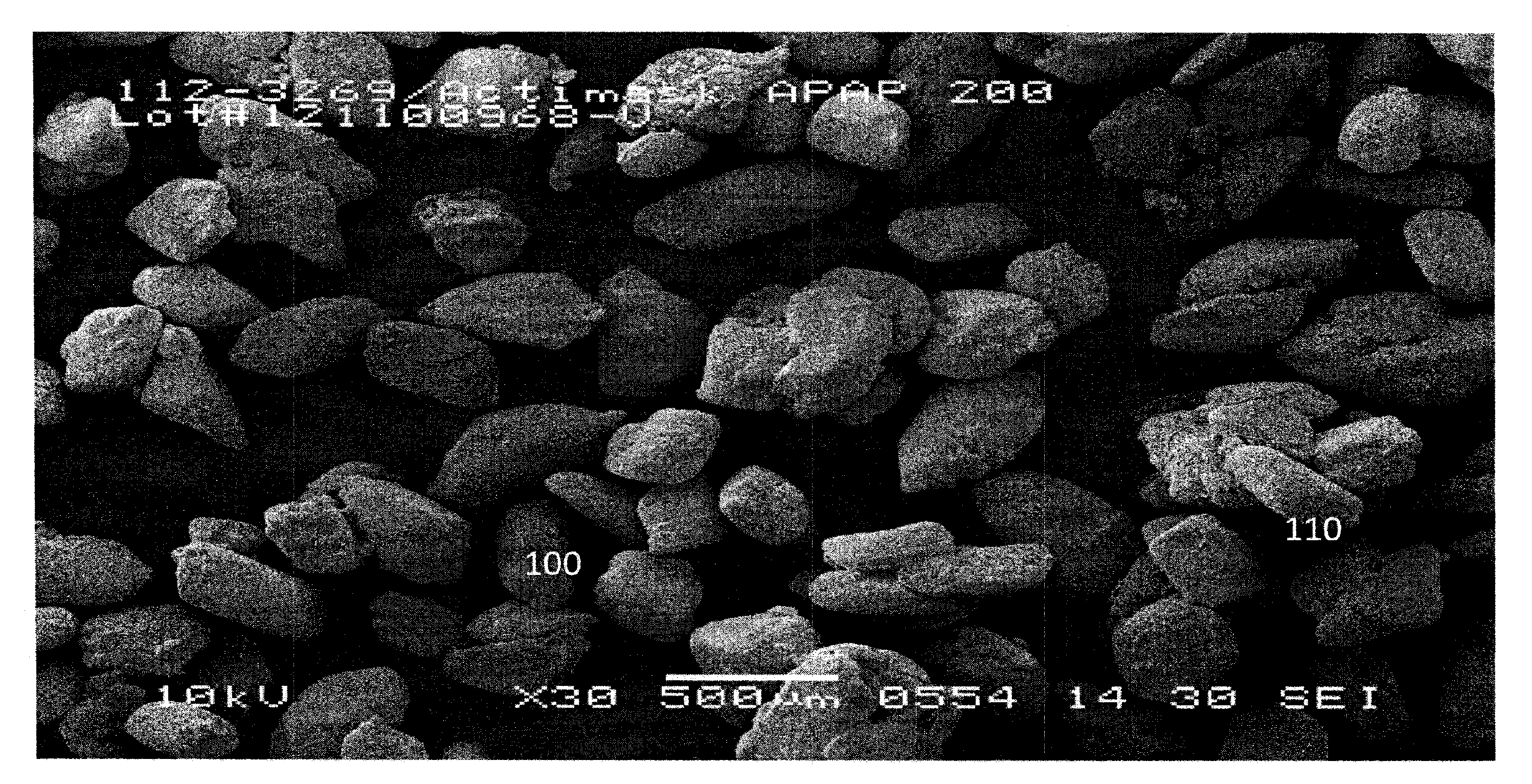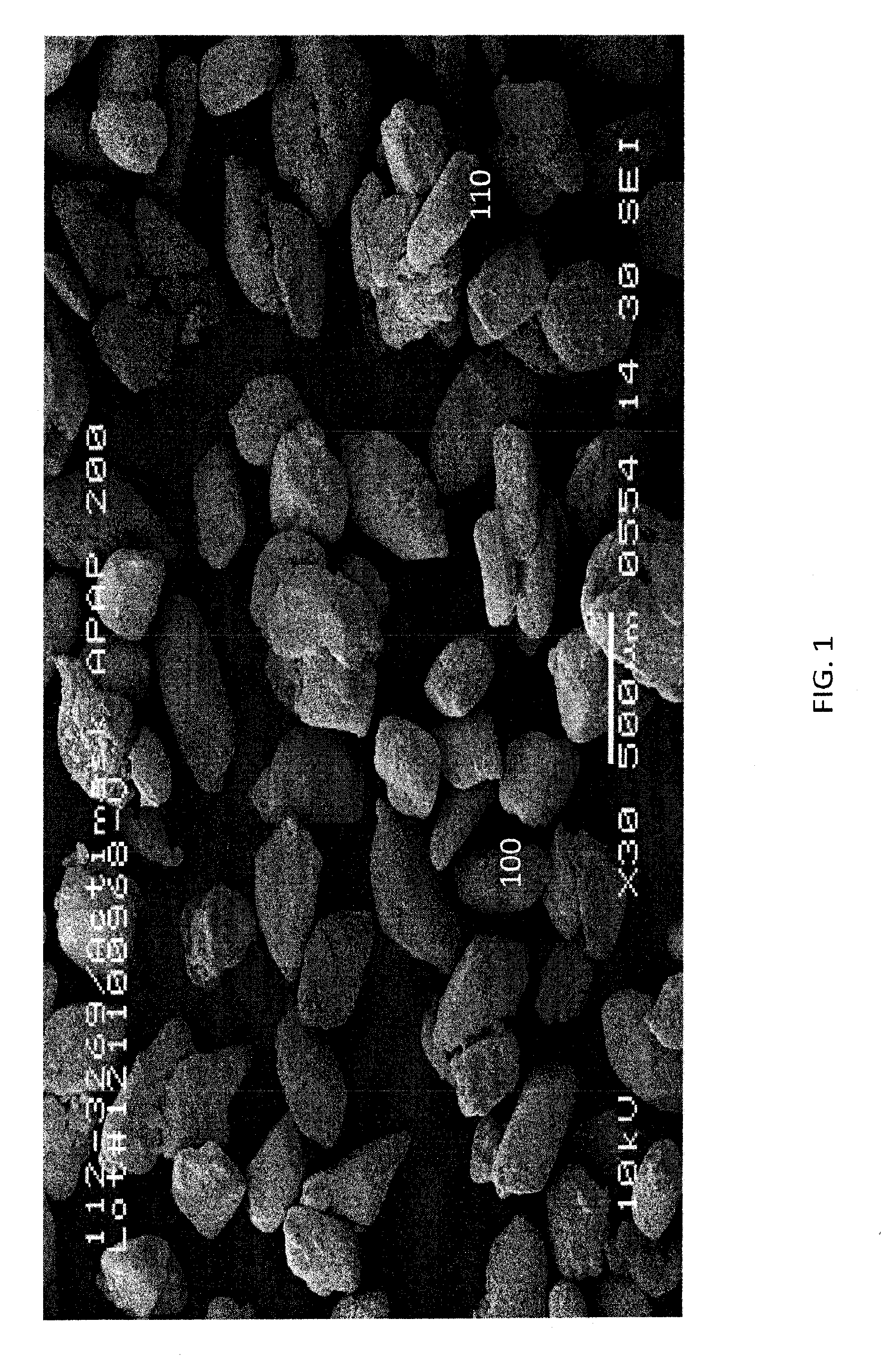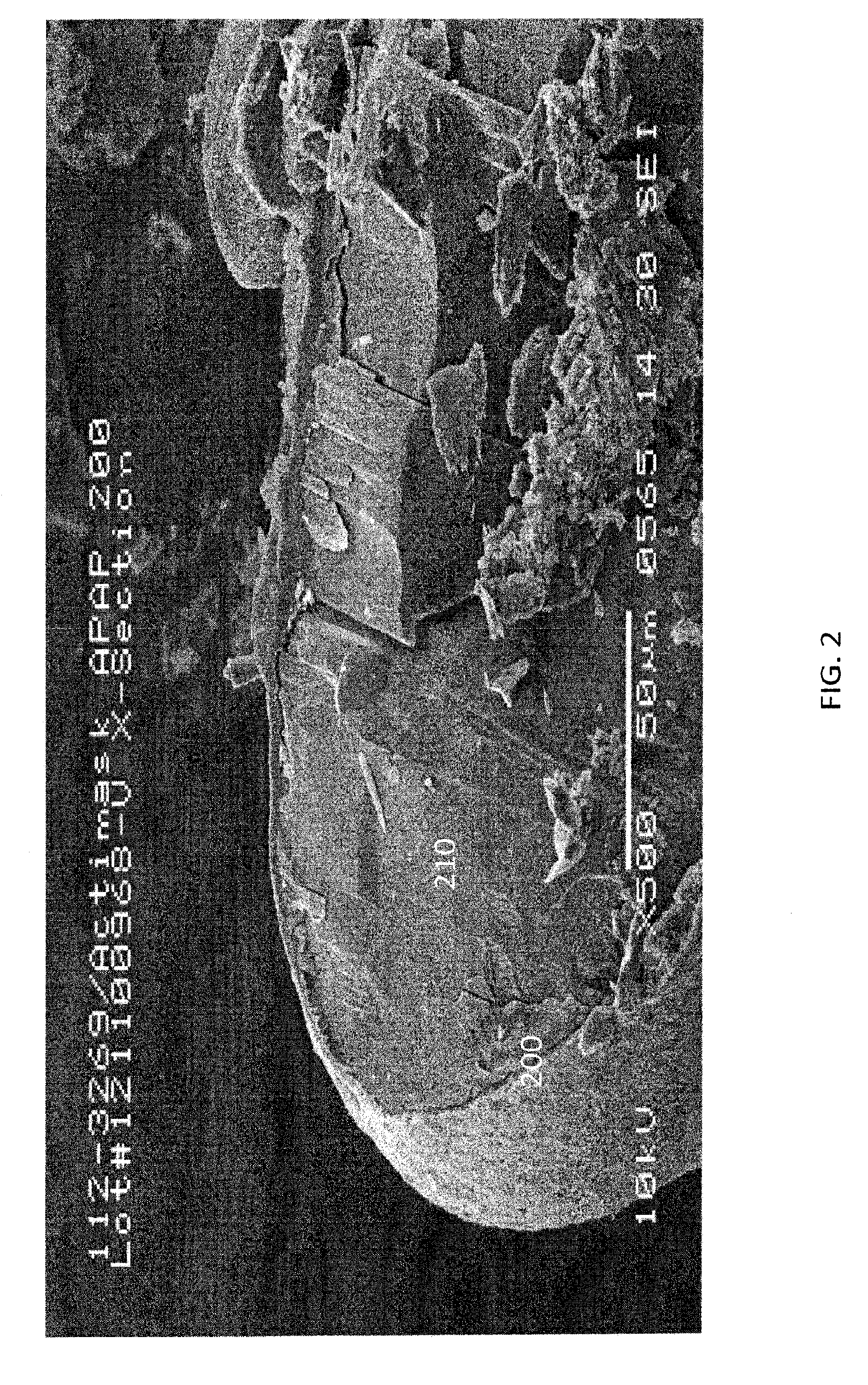Microencapsulation process and product
a microencapsulation and microprocessing technology, applied in the field of microencapsulation, can solve the problems of unwanted agglomeration and limitations in controlling the size of microencapsules
- Summary
- Abstract
- Description
- Claims
- Application Information
AI Technical Summary
Benefits of technology
Problems solved by technology
Method used
Image
Examples
example 1
[0332]
Ingredient%GramsGelatin, type A 225 bloom2.0%20Sodium Polyphosphate0.2%2.0Acetaminophen (Covidien, 20%200.0Special Granular)Purified WaterQuantity sufficient to make1000 mlTransglutaminase4
[0333]In a 2000 ml Kimax beaker using a 3.5 inch diameter A310 Lightnin mixer blade, gelatin was mixed with 700 ml of water and heated to 40 C with stirring at ˜300 RPM. When gelatin was dissolved, acetaminophen (“ApAp”) was added and mixed until acetaminophen was fully wetted. The mixture was heated to 50° C. to 55° C. The sodium polyphosphate was dissolved in ˜200 ml water while stirring. When dissolved, the polyphosphate solution was added to the gelatin acetaminophen solution and reheated to ˜50° C. Sufficient volume of water was added to make a total of 1000 ml water (“ApAp / gelatin / polyphosphate mixture”). The pH of the mixture was adjusted to 4.8 using a dilute acid such as acetic acid while stirring at 400 RPM+ / −25. The mixture was cooled to 10° C. at a cooling rate of 0.1° per minute...
example 2
[0335]
Gelatin A, 225 bloom, porcine 0.90% (10 grams)Acetaminophen (APAP) 8.97% (100 grams)Transglutaminase (Activa ® TI) 0.36% (4 grams)Polyphosphate mixture 0.09% (1 gram)Water 89.69% (1000 grams)Total100.00%
[0336]Polyphosphate mixtures were prepared by adding Glass H and then Hexaphos (both from ICL Performance Products, St. Louis, Mo.) (at ratios of 40:60 or 55:45) to reverse osmosis (RO) water at room temperature, and mixed until dissolved. Gelatin (Great Lakes Gelatin Co., Graylakes, Ill.) was added to RO water at room temperature and mixed until dissolved. Gelatin solution was heated to either 50° C. or 60° C. Acetaminophen was added to gelatin solution, and then the polyphosphate mixture solution was added. The mixture was heated to 50° C. while mixing. When the temperature reached either 50° C. or 60° C., the pH was adjusted to either 4.5 or 4.8 using glacial acetic acid (at a 1:4 ratio with water). When the pH equaled either 4.5 or 4.8, the mixture was cooled to 10° C. at a...
example 3
[0339]
Gelatin, 225 bloom, porcine 0.99% (11 grams)Acetaminophen (APAP) 8.96% (100 grams)Transglutaminase (Activa ® TI) 0.36% (4 grams)Polyphosphate mixture 0.09% (1 gram)Water 89.61% (1000 grams)Total100.00%
[0340]A polyphosphate mixture was prepared by adding Glass H and then Hexaphos (both from ICL Performance Products, St. Louis, Mo.) (at ratio of 75:25) to reverse osmosis (RO) water at room temperature, and mixed until dissolved. Gelatin (Great Lakes Gelatin Co., Graylakes, Ill.) was added to RO water at room temperature and mixed until dissolved. Gelatin solution was heated to 50° C. Acetaminophen was added to gelatin solution, and then the polyphosphate mixture solution was added. The mixture was heated to 60° C. while mixing. When the temperature reached 60° C., the pH was adjusted to 4.5 using glacial acetic acid (at a 1:4 ratio with water). When the pH equaled 4.5, the suspension was mixed (at approximately 301 RPM with a Lightnin A310 turbine mixer) while cooling at a rate ...
PUM
| Property | Measurement | Unit |
|---|---|---|
| thickness | aaaaa | aaaaa |
| thickness | aaaaa | aaaaa |
| compression pressure | aaaaa | aaaaa |
Abstract
Description
Claims
Application Information
 Login to View More
Login to View More - R&D
- Intellectual Property
- Life Sciences
- Materials
- Tech Scout
- Unparalleled Data Quality
- Higher Quality Content
- 60% Fewer Hallucinations
Browse by: Latest US Patents, China's latest patents, Technical Efficacy Thesaurus, Application Domain, Technology Topic, Popular Technical Reports.
© 2025 PatSnap. All rights reserved.Legal|Privacy policy|Modern Slavery Act Transparency Statement|Sitemap|About US| Contact US: help@patsnap.com



